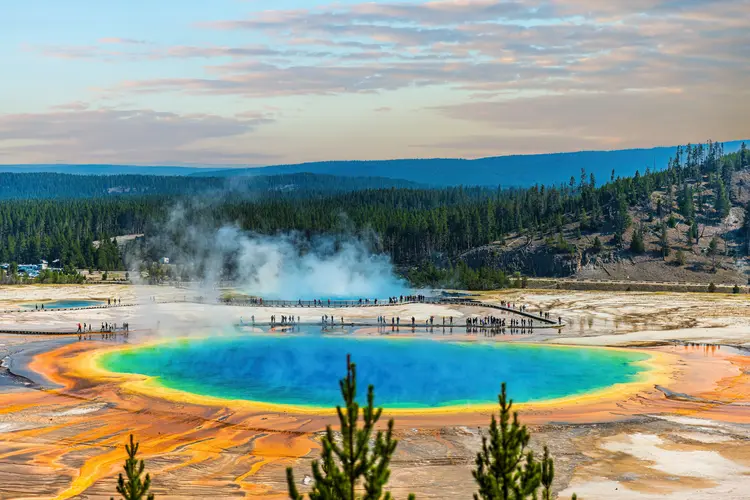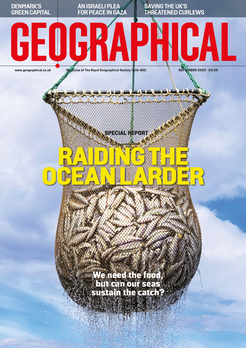
Discover some fascinating scientific advancements and studies from across the globe – from research on bogong moths to pangolins
By
Guiding stars
In Australia’s Snowy Mountains, a small laboratory houses a unique flight arena designed specifically for the bogong moth. These moths, endemic to Australia, make a nearly 1,000-kilometre migration each spring from breeding grounds in the hot lowlands of eastern Australia to cool mountain caves near the southern coast – a place they have never been before.
While it’s known that some birds and mammals, including humans, use the stars to navigate, scientists were unsure whether moths could do the same.

To investigate, researchers transformed the lab into a miniature planetarium, projecting a realistic simulation of the night sky above a carefully tethered moth. Blackout blinds and black felt eliminated natural light, while Helmholtz coils
placed around the building neutralised the Earth’s magnetic fields – known to influence migratory navigation. With only stars to guide them, the moths consistently flew in the correct migratory direction for the season.
Eric Warrant, a zoologist at Lund University in Sweden and co-author of the study, explains that when the projection of the night sky was rotated, the moths adjusted their bearing accordingly. ‘They’re not just flying towards the brightest light or following a simple visual cue,’ says Warrant. ‘They’re reading specific patterns in the night sky to determine a geographic direction, just like migratory birds do.’ When the stars were scrambled, the moths became disoriented – compelling evidence that they use celestial cues for orientation.
A homegrown threat
African pangolins are the world’s most trafficked wild animal. Considerable efforts have been made to curb the illegal trade in their scales, which are used in traditional Chinese medicine. In 2023, Nigerian officials incinerated nearly four tonnes of seized scales, worth an estimated £1.2 million, en route to Asia. However, new research suggests that international demand for scales may not be the primary threat.
‘When we spoke to hunters and traders, it was obvious that meat was the motivation,’ says Charles Emogor, a zoologist at the University of Cambridge.

Despite Nigeria being a major export hub for scales, Emogor and colleagues estimate that 98 per cent of Nigerian pangolins are hunted for their meat, which is considered a delicacy. Roughly two-thirds of the scales are discarded, with meat fetching far higher prices.
A survey of more than 800 hunters and traders in Nigeria’s Cross River Forest region, conducted between 2020 and 2023, found that around 21,000 pangolins are killed annually – most caught opportunistically. ‘Pangolins curl into a ball when threatened, which sadly makes them easy to catch,’ Emogor explains.
The data mirror findings from Cameroon and Gabon, suggesting that meat consumption is a continent-wide driver of exploitation. Emogor notes that addressing this demand may lead to more effective – and affordable – conservation strategies than those aimed solely at international trade.
A change of pace
A discarded aluminium can tab, unearthed on the Cumbrian coastline, has given scientists a surprising insight into how human activity is reshaping geological processes. Researchers from the University of Glasgow have found that industrial waste – specifically steel slag – is transforming into solid rock in mere decades, a process typically thought to take millions of years.
‘It challenges our understanding of how rock is formed,’ says Amanda Owen, a sedimentologist at the University of Glasgow, ‘and suggests that the waste material we’ve produced in creating the modern world is going to have an irreversible impact on our future.’

At Derwent Howe, a former industrial site, 19th- and 20th-century ironworks deposited vast quantities of slag. Exposure to seawater and air causes reactive elements within the slag to form natural cements, rapidly binding the material into new rock. The discovery of a 1989 can tab and a 1934 coin encased in these deposits allowed researchers to precisely date the accelerated lithification. They believe the same process is likely occurring at other coastal industrial sites globally.
‘When waste material is first deposited, it’s loose and can be moved as required,’ says Owen. ‘What our finding shows is that we may have just decades, not centuries, before it turns into rock – something far harder to manage.’
Environmental trade-offs
Many plant species have evolved chemical defences to deter predators, from bitter tannins to toxic compounds. One such chemical, isoprene – a scentless, little-understood hydrocarbon emitted by oak and poplar trees – is now being recognised for its surprising ecological role.

A 40-year research programme led by Tom Sharkey at Michigan State University has revealed how isoprene repels insects. In experiments published in Science Advances, hornworm larvae fed on isoprene-treated leaves later suffered stomach aches, the result of indigestible proteins triggered by the chemical. Those that continued to eat showed stunted growth.
While crop plants don’t usually produce isoprene, another study found that some – including soybeans – can emit the compound under stress, such as high temperatures or physical damage. This opens possibilities for engineering more resilient, pest-resistant crops. But the benefit comes with a trade-off.
Isoprene, the second-most-emitted hydrocarbon on Earth after human-produced methane, reacts with sunlight and nitrogen oxides to form toxic compounds – including ozone and aerosols – that worsen air pollution.
Sharkey acknowledges the dilemma: ‘Should we introduce isoprene to make crops insect-resistant, despite its implications for ozone? Or should we genetically engineer plants to minimise isoprene production, to improve air quality?’
Ghost plumes
Mantle plumes – columns of hot, buoyant rock rising from deep within the Earth – are usually associated with surface volcanism in areas far from tectonic plate boundaries. A well-known example is Yellowstone National Park in the USA. But a new study in Earth and Planetary Science Letters has uncovered a similar plume beneath Oman – a country with no present-day volcanic activity.

Seismic readings hinted at something odd: zones where seismic waves slowed, indicating hotter, softer rock. Follow-up modelling revealed discontinuities – boundaries within the Earth’s interior where wave behaviour changes – at depths of 410 and 660 kilometres.
The zone, dubbed the Dani plume, is estimated to be 200–300 kilometres wide and hundreds of degrees Celsius hotter than the surrounding material. It may have influenced the movement of the Indian tectonic plate millions of years ago and could still be contributing to land elevation in Oman today.




